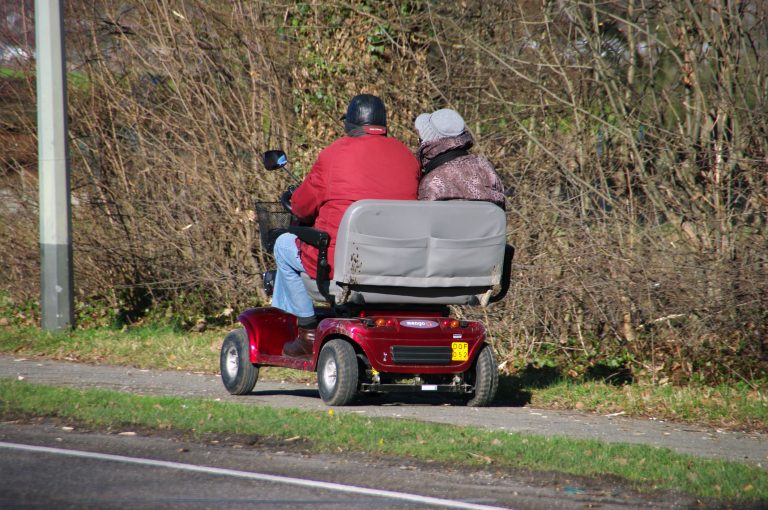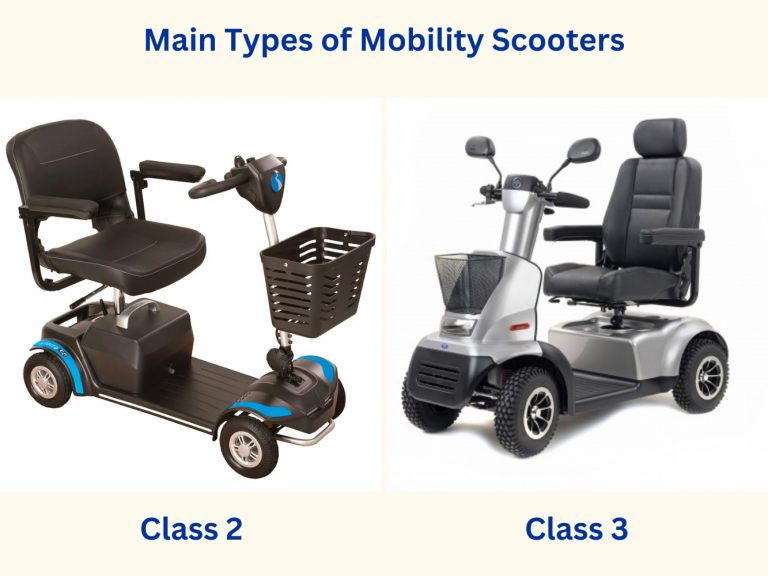What Is a ‘Not in a Class’ Mobility Scooter
Are you considering purchasing a mobility scooter to help you regain your independence? With so many options available, it’s essential to understand the different classes of mobility scooters and the rules surrounding their use.
In this article, we’ll focus on “not in a class” mobility scooters, explaining what they are, the risks associated with using them and why sticking to a class 2 or 3 scooter might be the best choice for you.
What do ‘in-class’ and ‘not in-class’ mean?
What makes a scooter “not in a class”? According to the UK government website, a mobility scooter or powered wheelchair is considered “not in a class” if it:
- Has a maximum speed of over 8mph
- Has an unladen weight of over 150kg
- Is designed to carry more than one person
- Has a maximum width of over 0.85 metres
If a mobility scooter meets any of these criteria, it is not legally allowed on pavements, footpaths, pedestrian areas or cycle paths. In fact, these scooters can only be used on private land with the owner’s permission.

Is it dangerous to use a ‘not in a class’ scooter?
Using a “not in a class” mobility scooter can pose significant risks to both the user and others around them. These scooters are much larger and heavier than class 2 or 3 scooters, making them more difficult to control and manoeuvre. They also have a higher maximum speed, which increases the risk of accidents and collisions.
Additionally, because “not in a class” scooters are not legally allowed on pavements or footpaths, users may be tempted to drive them on roads. However, these scooters are not designed for road use and do not have the necessary safety features, such as indicators, rear-view mirrors and brake lights. This puts users at risk of being involved in accidents with other vehicles.
What is the difference between class 2 and class 3 scooters?
At Ideas in Action, we understand the importance of choosing the right mobility scooter for your needs. That’s why we only stock class 2 and 3 scooters, which are designed for safe use on pavements, footpaths and in pedestrian areas.

Class 2 scooters have a maximum speed of 4mph and are suitable for use on pavements and in shopping centres. They are lightweight and easy to manoeuvre, making them ideal for those who only need to travel short distances.
View our current class 2 mobility scooters in stock:
Class 3 scooters, on the other hand, have a maximum speed of 8mph and can be used on roads as well as pavements. They are larger and more robust than class 2 scooters, making them suitable for those who need to travel longer distances or navigate rougher terrain. If you’re unsure which class of scooter is right for you, our team of expert advisors is here to help. We offer free, no-obligation home visits and technical advice to ensure you find the perfect mobility scooter for your needs.
View our current class 3 mobility scooters in stock:
By sticking to a class 2 or 3 scooter from a reputable supplier like Ideas in Action, you can enjoy the benefits of increased independence and mobility without compromising on safety. Visit our heated showroom in Birmingham to try our range of scooters for yourself and speak to our friendly team for expert advice and support.
